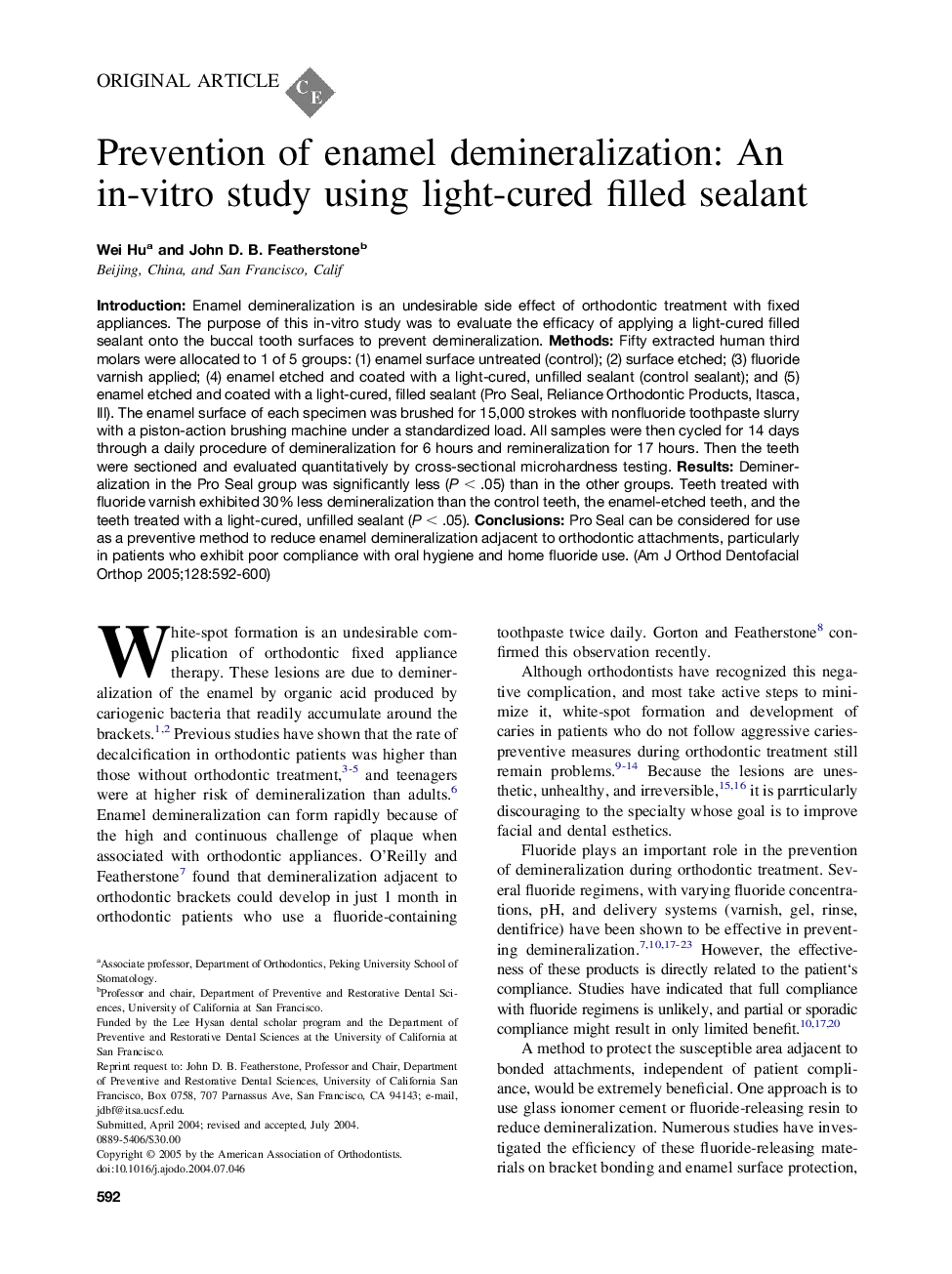| Article ID | Journal | Published Year | Pages | File Type |
|---|---|---|---|---|
| 9992539 | American Journal of Orthodontics and Dentofacial Orthopedics | 2005 | 9 Pages |
Abstract
Introduction: Enamel demineralization is an undesirable side effect of orthodontic treatment with fixed appliances. The purpose of this in-vitro study was to evaluate the efficacy of applying a light-cured filled sealant onto the buccal tooth surfaces to prevent demineralization. Methods: Fifty extracted human third molars were allocated to 1 of 5 groups: (1) enamel surface untreated (control); (2) surface etched; (3) fluoride varnish applied; (4) enamel etched and coated with a light-cured, unfilled sealant (control sealant); and (5) enamel etched and coated with a light-cured, filled sealant (Pro Seal, Reliance Orthodontic Products, Itasca, Ill). The enamel surface of each specimen was brushed for 15,000 strokes with nonfluoride toothpaste slurry with a piston-action brushing machine under a standardized load. All samples were then cycled for 14 days through a daily procedure of demineralization for 6 hours and remineralization for 17 hours. Then the teeth were sectioned and evaluated quantitatively by cross-sectional microhardness testing. Results: Demineralization in the Pro Seal group was significantly less (P < .05) than in the other groups. Teeth treated with fluoride varnish exhibited 30% less demineralization than the control teeth, the enamel-etched teeth, and the teeth treated with a light-cured, unfilled sealant (P < .05). Conclusions: Pro Seal can be considered for use as a preventive method to reduce enamel demineralization adjacent to orthodontic attachments, particularly in patients who exhibit poor compliance with oral hygiene and home fluoride use.
Related Topics
Health Sciences
Medicine and Dentistry
Dentistry, Oral Surgery and Medicine
Authors
Wei Hu, John D.B. Featherstone,
